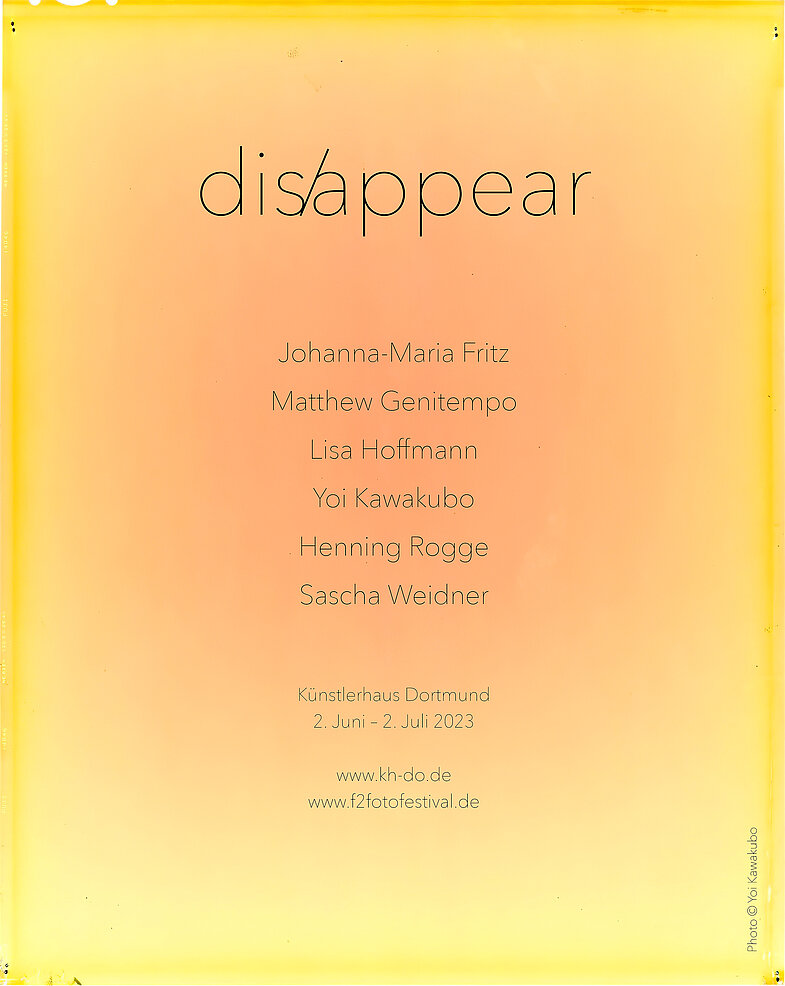
Starting point of the exhibition is the idea of total visibility of the world through photographic images. However, their sheer mass and immediate dissemination ultimately makes everything depicted equally unimportant, almost invisible.
So what can photography still achieve in this day and age? The exhibition brings together artists whose works radiate a presence that arises from an intensive and usually long-term engagement with their respective subjects. They thus form an antipole to the quickly consumed, consistently fleeting visual imagery that characterizes our everyday lives.
In view of the theme of the f² photo festival "globality", the selected works reflect conflicts of today – collage-like layers of images of worldwide crises spread via news and social media channels (Lisa Hoffmann), traces of past (Henning Rogge) and hints of future warlike violence (Johanna-Maria Fritz), the attempt to visually capture radioactive contamination in Fukushima (Yoi Kawakubo), the poetic depiction of places where people – beyond worldly conflicts – have chosen to live apart from society (Matthew Genitempo), to the confrontation with a site that has become synonymous with unresolved personal conflicts (Sascha Weidner).


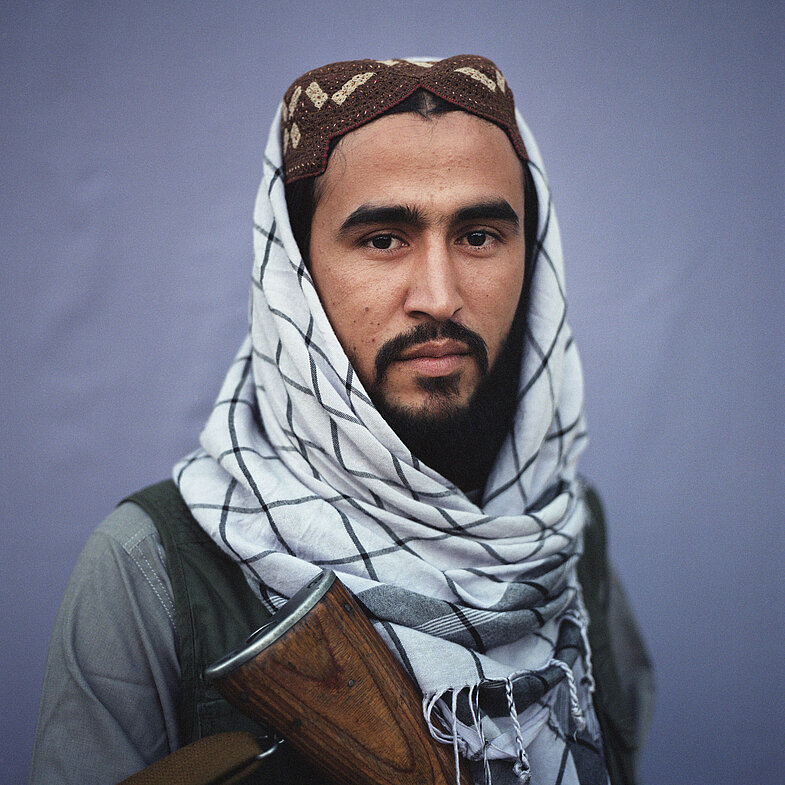
In order to understand the movement, however, it is worthwhile to take a closer look at the individual fates and motivations. The portraits, taken in Kabul in September and October in analog medium format, give an impression of the people behind the fighters, who come from different regions and joined the fundamentalists for many different reasons - without, however, creating heroic images or icons. The pictures were taken shortly after the takeover in October 2021.
Inspired by the life and work of the poet and land surveyor, Frank Stanford, these photographs of hermetic homes and men living in solitude were taken in the Ozark Mountains of Arkansas and Missouri. By capturing the foggy landscapes, cluttered interiors, and rugged men that are tucked away in the dark woods, Jasper explores a fascination with running away from the everyday. The work bounces between fact and fiction, exhibiting the reality and myth of what it means to be truly apart from society.
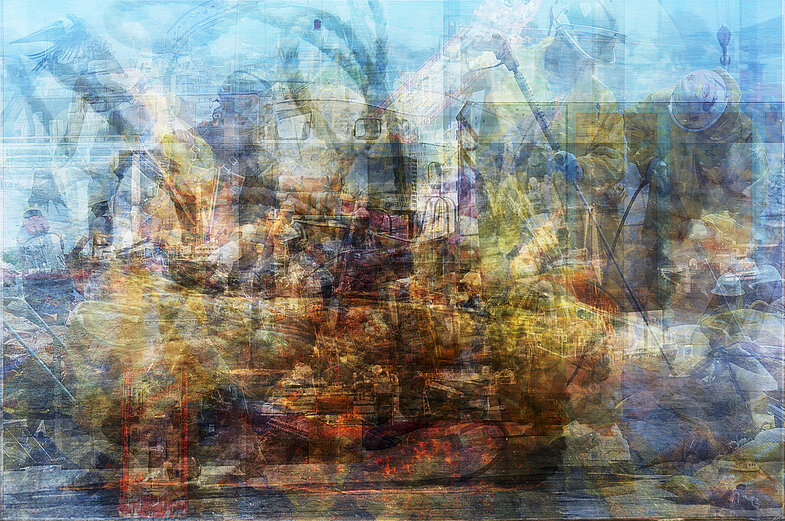
Lisa Hoffmann researches alternative documentarisms and ways of representing traumatic experience. In her series ATLAS OF THE ESSENCE she addresses natural and environmental disasters, as well as wars and social conflicts. The respective works superimpose hundreds to thousands of photographs of individual events and are sourced from social media platforms, instant messengers, and search engines. In these works, the complexity of events, the available perspectives, and the individual, characterizing phenomenology, which also consists of the invisible and the unspeakable, take on significant importance.
By breaking with familiar image concepts and learned ways of perceiving information of events through images, an aesthetic-sensual experience of perception is made possible, reflecting on previous perception and behavior towards images. The individual essences show chaos, gaps and ambiguity inherent to traumatic events and their witnessing.
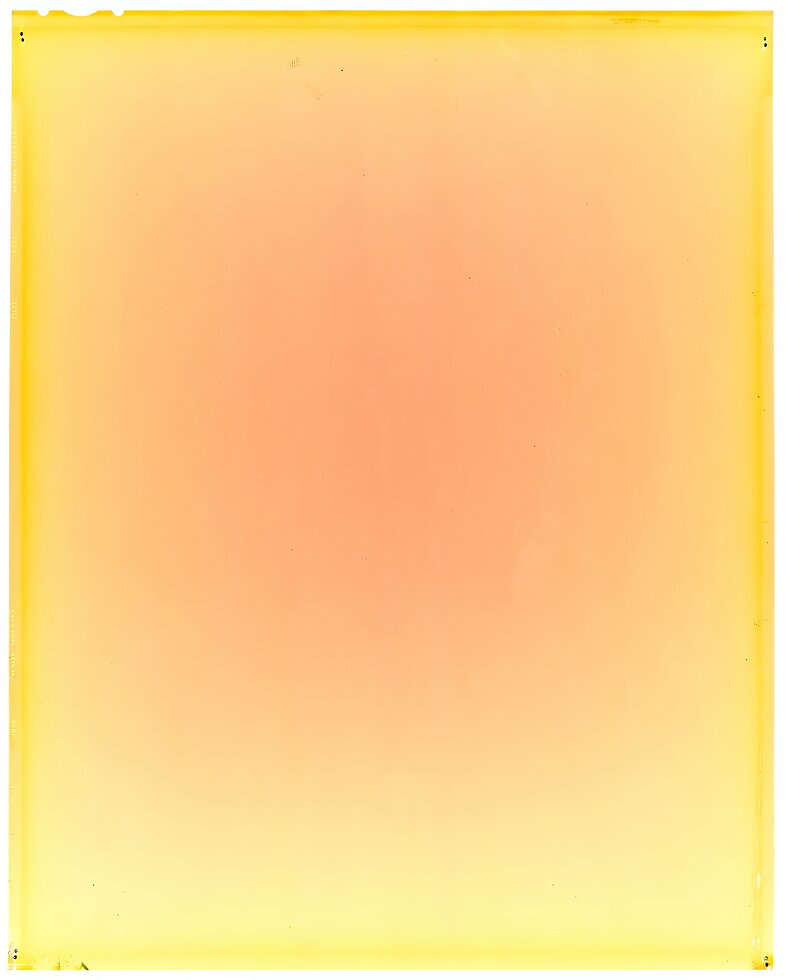
After visiting Fukushima Prefecture after the Great East Earthquake in Tohoku, northeastern Japan, Kawakubo buried silver halide films in the evacuation zone. The artist then retrieved the films after a number of months and printed them using an enlarged format. Instead of blocking the light through the action of burying the films, in opposition to photographs’ original method of being shown its image by light, Kawakubo transformed radiation that is invisible to the naked eye into the visible form. The title of this work is a quotation from the words of the American physicist Robert Oppenheimer who led the Manhattan Project that produced the first atomic bomb during World War II. Oppenheimer, also known as “the father of the atomic bomb” compared himself to the god of destruction in the Hindu holy text Bhagavad Gita. “If the radiance of a thousand suns were to burst into the skies, that would be like the splendour of the Mighty One...”
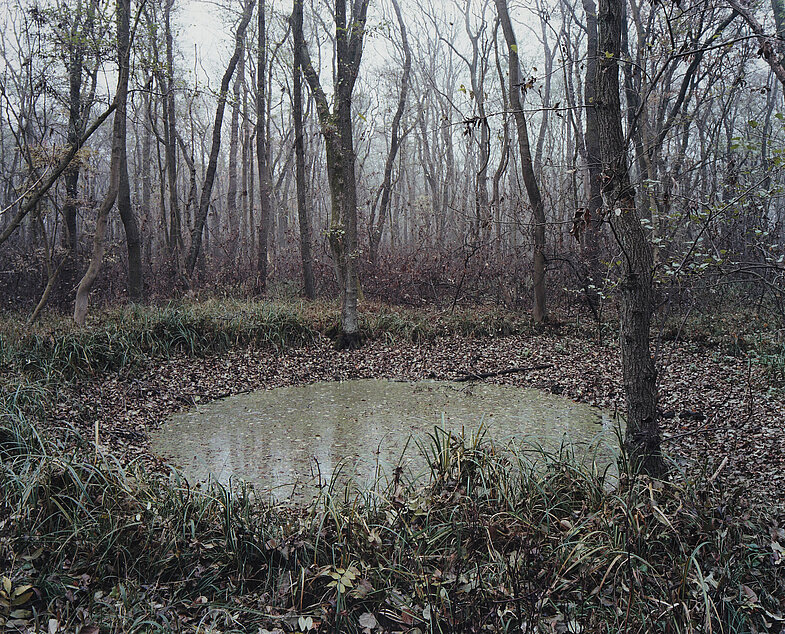
In his series Bombenkrater (since 2008) Henning Rogge has been photographing traces of air strikes from the Second World War in Germany. The artist set out to discover as many as possible through online research and aerial maps. Mostly off-grid and hardly recognized for what they are, the depressions in the ground have been reclaimed by nature, sometimes transformed into small ponds offering a habitat for animals. The quiet, idyllic landscapes are in contrast to the abrupt and violent force of their creation—and bear witness to the presence of the past like an unconscious legacy.
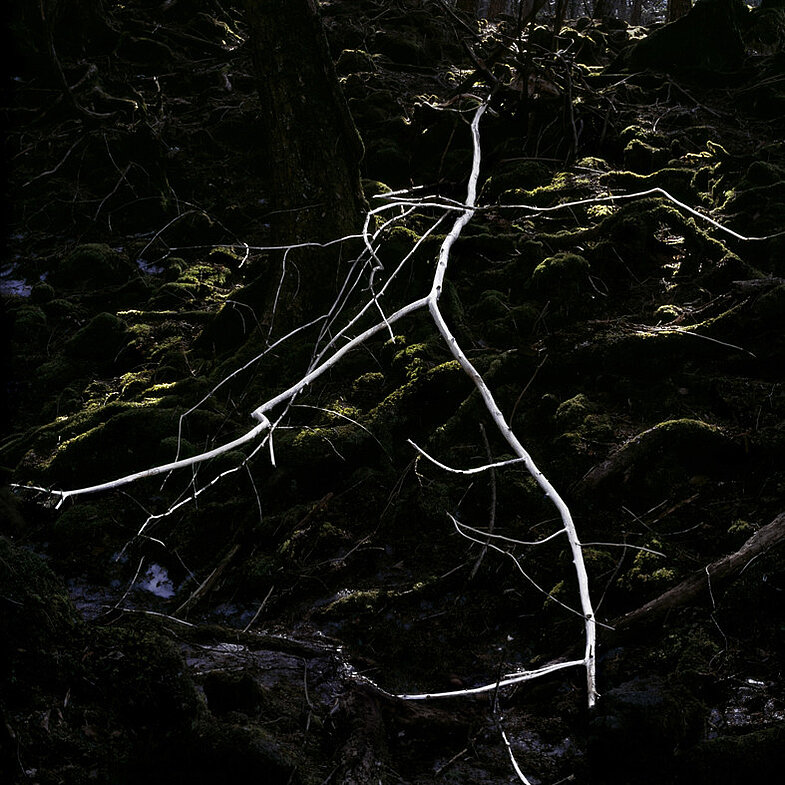
In his very own poetic visual language, Sascha Weidner approached the Aokigahara forest in Japan, a place that gained notoriety for people taking their own lives there.